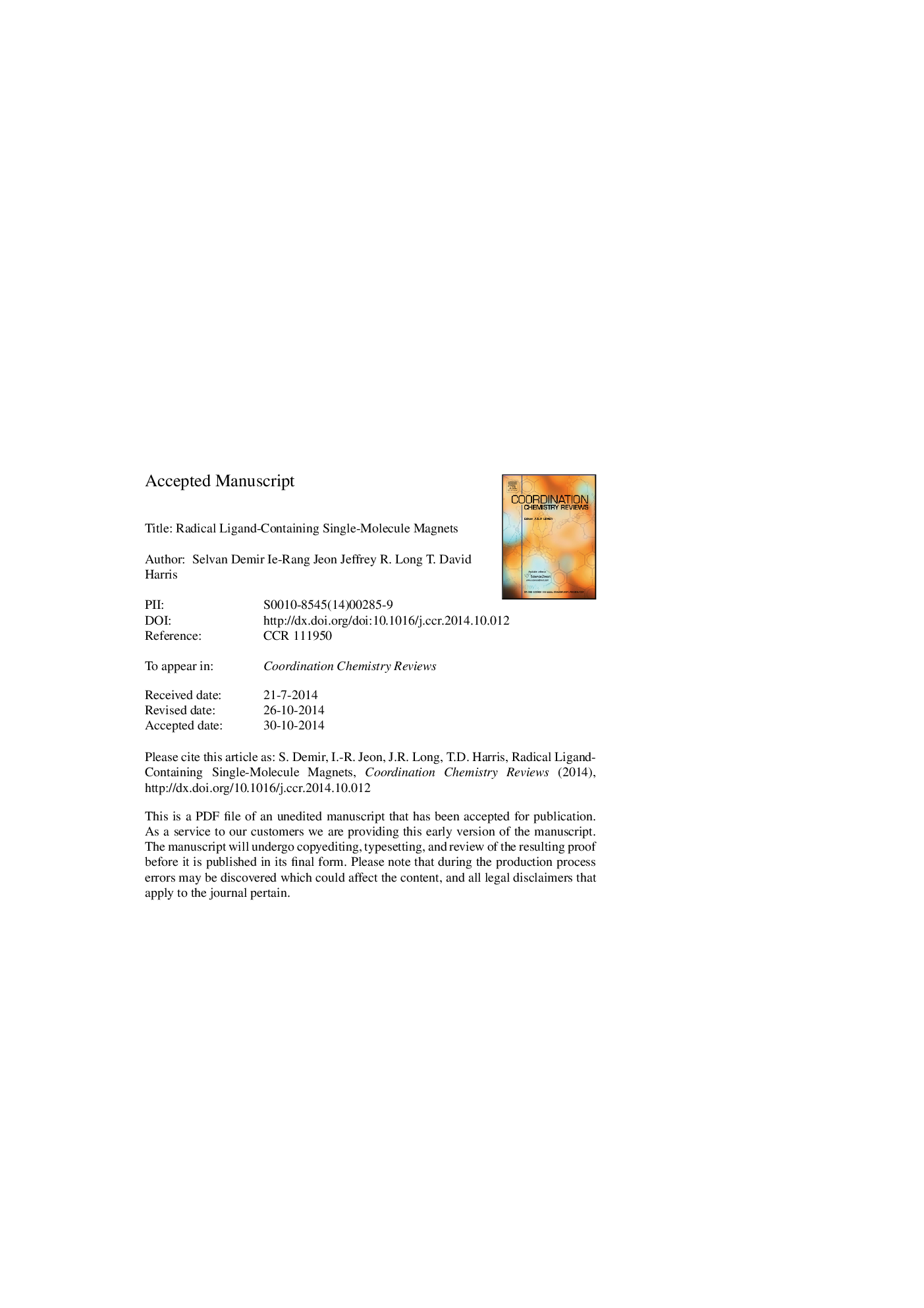| Article ID | Journal | Published Year | Pages | File Type |
|---|---|---|---|---|
| 7748011 | Coordination Chemistry Reviews | 2015 | 35 Pages |
Abstract
- We review the current literature of radical ligand-containing single-molecule magnets.
- We also briefly overview other classes of metal-ligand radical complexes that could be used to design new single-molecule magnets.
- Ligand-field and electronic structure considerations in dictating exchange strength and slow magnetic relaxation are emphasized.
Keywords
NAPCp′ISQCBVdTppzPentamethylcyclopentadienylAZPTCNETetrathiafulvaleneTCNQHFACIPRtBuHMMCThCPPtert-butylTBAPDIPICτ0TFADADTTF2,2′:6′,2″-Terpyridine2,2′-BipyridineCp*TetrabutylammoniumTetracyanoquinodimethaneTetracyanoethyleneSalenSingle-molecule magnetsethylindIndazoleIso-propylImidazoleBenzylbutylTerpyTris(2-aminoethyl)amineTris(2-pyridylmethyl)amineZero-field splittingExchange couplingbipyDi-2-pyridylamineTEMPOCoercive fieldPhthalocyaninephenylTRENRadical ligandsRedox-active ligandsMethylNaphthaleneHydrotris(pyrazolyl)boratePROXYLPyridinePicolinate
Related Topics
Physical Sciences and Engineering
Chemistry
Inorganic Chemistry
Authors
Selvan Demir, Ie-Rang Jeon, Jeffrey R. Long, T. David Harris,
